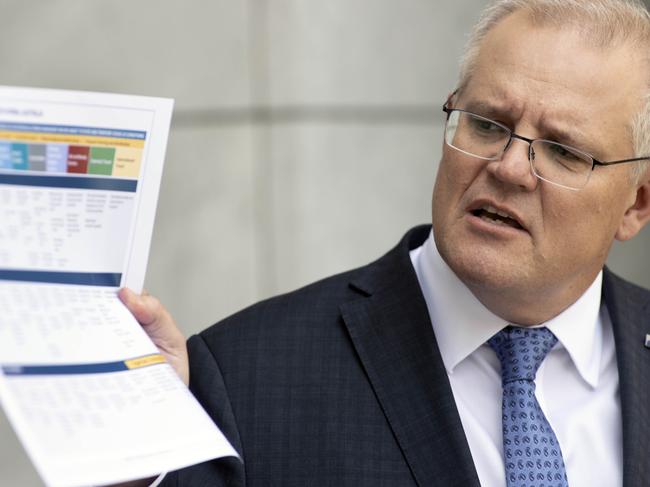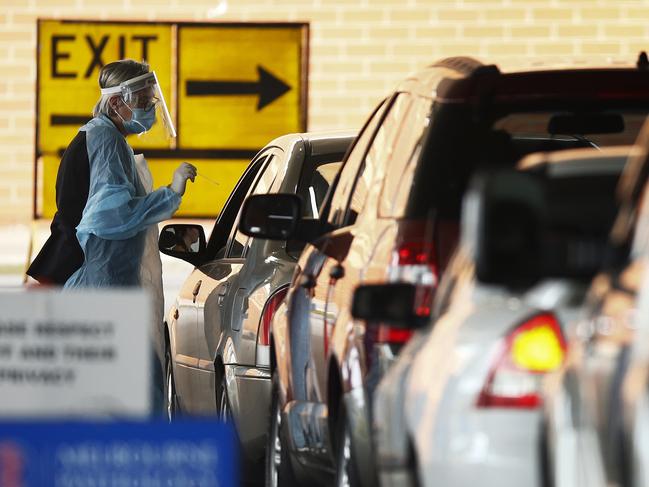Tracking devices, home quarantine on cards for new ‘COVID normal’ Australia
Tracking devices and home quarantine are likely be used instead of hotel stays, as the PM shares plans for opening the country by Christmas.
Coronavirus
Don't miss out on the headlines from Coronavirus. Followed categories will be added to My News.
Tracking bracelets or anklets, smartphone apps and home quarantine will likely be used instead of a strict 14-day hotel stay under looming changes to Australia’s quarantine system.
And by Christmas, all state borders – except Western Australia’s – will be open, people will return to usual workplaces and international travel with New Zealand and other “low-risk” countries will resume.
Scott Morrison unveiled the changes yesterday in a new roadmap to reopen a “COVID-normal” Australia by December. The Prime Minister also released a review of Australia’s hotel quarantine system, which recommends new measures to replace the “one-size-fits-all” model of 14-day hotel stays.

Mr Morrison said a range of options was being considered, including allowing corporates to “set up their own quarantine facilities under strict guidelines and standards”.
Home quarantine, smartphone apps or electronic-monitoring devices, such as those used by Singapore to track incoming travellers, were also flagged as potential options.
Mr Morrison said the goal was to get 26,000 Australians home by Christmas.
“Whether we achieve that is going to depend on many things. It will depend on flights, it will be dependent on the continued co-operation of the states and territories,” he said.
A State Government spokesman said SA had agreed to continue to review hotel quarantine arrangements, including “alternative models”.
“Health considerations will be at the forefront of any decisions made,” he said.
Under the new roadmap, Step 3 – which has a target date of Christmas – requires Australians to still practice social distancing of 1.5m but places no restrictions on social gatherings, weddings, funerals or religious services. Cafes, restaurants and other venues won’t need to limit patrons using the 2sq m or 4sq m rule but must record contact details, ensure social distancing and have a COVID-safe plan.
Events with 500 people or more will need State Government approval, but those below that number can go ahead with a COVID-safe plan.

Nightclubs and large events, such as music and food festivals, are considered “very high-risk environments” and may continue to be restricted.
A new “traffic light” system will also be launched for monitoring cases, testing and aged care. Border closures will also be scrapped in favour of a hotspot model that will reimpose travel, gathering and business restrictions in local areas if new outbreaks occur. Premier Steven Marshall and all other state and territory leaders except WA signed up to the new roadmap yesterday.
Australia’s international arrivals cap will increase by another 290 places next month, with WA and Queensland agreeing to lift their caps. SA did not lift its cap at the meeting.
The moves come as SA Health yesterday announced a male teenager and an unrelated woman in her 20s tested positive after returning from overseas on Wednesday.
They were among 10 infectious patients – the highest number of “active” cases since May 1 – recovering in the Pullman medi-hotel in Hindmarsh Square. SA Health says they pose no public risk.
The Commonwealth has also agreed to cover paid pandemic leave in SA.

